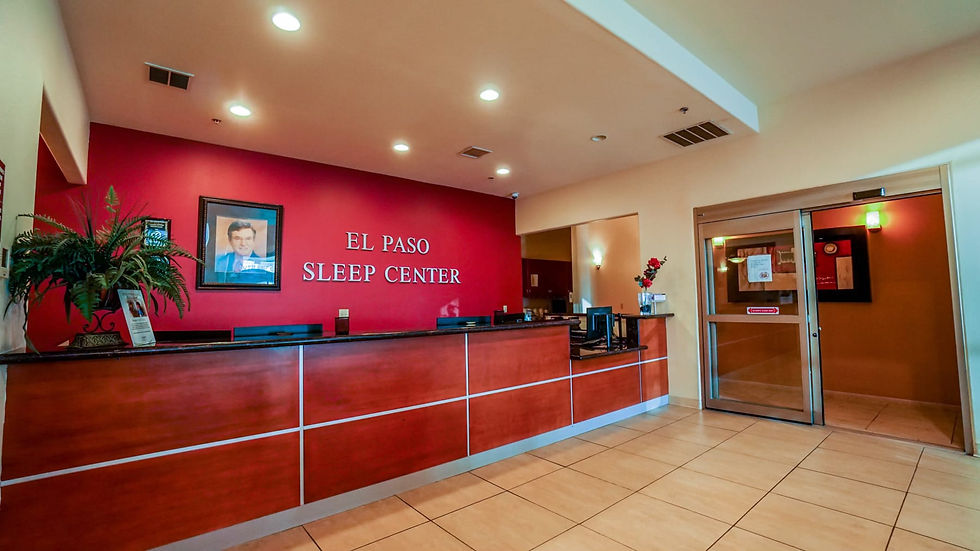The Importance of Home Diagnostics in Healthcare
- Elite Accreditation Consultants
- Aug 18
- 3 min read
Updated: Sep 2
Why a Brick-and-Mortar Site is Still Requested
Modality Limits & Safety: A lot of imaging and tests (like x-ray/fluoro, CT/MRI, stress testing with monitoring, and full PFT labs) simply can’t be done at home. This is due to factors such as radiation exposure, magnet safety, crash-readiness, or the need for technician support.
Medicare/IDTF Standards: IDTF enrollment expects defined supervision, quality control/calibration, secure records, and frequently a fixed operational base. Home distribution is acceptable for some tests, but the IDTF still needs policies, chain-of-custody, asset control, and a physical “anchor.”
Supervision Rules Vary by Code: Some tests require direct or personal supervision, while others allow general supervision. This distinction drives where and how you can perform them.
Accreditation & Quality Assurance: For many payers, accreditation and periodic audits are easier to verify when there’s a controlled site with logs, device maintenance, and competency files.
Coverage Policy & Billing Edits: Many plans hard-code place-of-service or tie reimbursement to an IDTF or facility setting for certain CPT families.
A Practical Path That Keeps Costs Down
Hybrid Model: Maintain a lean fixed site that meets IDTF standards and quality control. Deploy home devices for eligible studies. Reserve the site for set-ups, returns, calibrations, higher-acuity tests, and audits.
Code-by-Code Crosswalk: Map your intended services to the setting (home vs. site) and supervision level. This becomes your payer-ready rationale.
Tight Logistics for Home Use: Implement written patient instructions, device tracking, tamper seals, cleaning and turnaround SOPs, data encryption, and a rapid fail-safe (the patient can come to the site if the home test fails).
Outcomes & Cost Story: Track turnaround time, diagnostic yield, and no-show reductions to demonstrate the savings of home deployment.
Starter Crosswalk (Illustrative)
Good Home Candidates: Sleep apnea screening/HSAT, ambulatory ECG patches (Holter/MCT), ambulatory BP monitoring, some long-term EEG (with proper set-up), remote physiologic monitoring bundles.
Usually Site-Based: Echo and most ultrasound labs (quality/technician requirements), stress tests, full PFT labs, x-ray/fluoro, CT/MRI, contrast studies, DEXA (varies), and procedures needing immediate clinical oversight.

The Future of Home Diagnostics
As technology advances, the landscape of healthcare is changing. Home diagnostics are becoming more reliable and accessible. This shift not only reduces costs but also enhances patient experience. Patients can receive care in the comfort of their homes, leading to better compliance and satisfaction.
The Role of Technology in Home Diagnostics
Innovations in technology are pivotal for the success of home diagnostics. Devices are now more user-friendly and equipped with advanced features. These improvements ensure accurate data collection and monitoring. For instance, remote monitoring tools can provide real-time data to healthcare providers, allowing for timely interventions.
Addressing Concerns About Home Diagnostics
Despite the advantages, some concerns remain about home diagnostics. Questions about accuracy, reliability, and patient safety are common. However, with proper protocols and training, these concerns can be mitigated. Healthcare providers must ensure that patients are well-informed and supported throughout the process.
Conclusion
Home-deployed diagnostics offer a promising alternative to traditional testing methods. By understanding the reasons behind the preference for brick-and-mortar sites, stakeholders can work towards a hybrid model that combines the best of both worlds. Embracing this change can lead to improved patient outcomes and reduced healthcare costs.
In summary, the integration of home diagnostics into the healthcare system is not just a trend; it is a necessary evolution. As we move forward, it is essential to continue exploring ways to enhance these services while ensuring safety and compliance.
By focusing on these aspects, healthcare providers can effectively navigate the challenges and embrace the future of diagnostics.




Comments